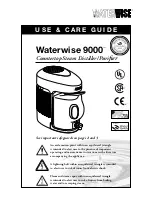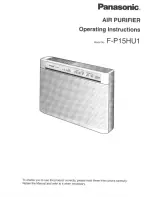
En-12
4.7. PIPE INSTALLATION
4.7.1. BRAZING
CAUTION
• If air or another type of refrigerant enters the refrigeration cycle,
the internal pressure in the refrigeration cycle will become
abnormally high and prevent the unit from exerting its
full performance.
• Apply nitrogen gas while brazing the pipes.
Nitrogen gas pressure: 0.02 MPa (= pressure felt sufficiently on the
back of your hand)
• If a pipe is brazed without applying nitrogen gas, it will create an oxidation film.
This can degrade performance or damage the parts in the unit (such as the compressor or valves).
• Do not use flux to braze pipes. If the flux is the chlorine type, it will cause the pipes to corrode.
Furthermore, if the flux contains fluoride, it will adversely affect the refrigerant pipe system such as by
degrading the refrigerant oil.
• For brazing material, use phosphor copper that does not require flux.
1. To prevent pipes from deforming, use a pipe cutter to cut them.
2. Remove the burrs while holding the pipe downwards so that cuttings cannot enter the pipe.
3. Place a flare on the pipe and allow the pipe to extend out of the flare as shown in Table 4.7-1.
4. Use a flare tool to make a flare.
5. Make sure that the flare portion D (Fig. 4.7-1) spreads evenly without any cracks.
4.7.2. FLARE CONNECTION
CAUTION
• Make sure cutting chips do not enter the copper pipes during flaring. If cutting chips enter the pipes, they can
cause the compressor or the valves to malfunction.
Fig. 4.7-1
Flare nut width
Die
Pipe
d
A
L1
Outer
diameter
of pipe d mm
Flare nut
width L1 mm
Dimension A, mm
Flare tool
for R410A
(Clutch type)
Flare tool for R22
(Clutch type)
ø 6.35
17
0 to 0.5
1.0 to 1.5
9.1
ø 9.52
22
0 to 0.5
1.0 to 1.5
13.2
ø 12.70
26
0 to 0.5
1.0 to 1.5
16.6
ø 15.88
29
0 to 0.5
1.0 to 1.5
19.7
ø 19.05
36
0 to 0.5
1.0 to 1.5
24.0
Table 4.7-1
Dimension D, mm
Tolerance
0.0 mm
-0.4 mm
(
)
Pressure regulating valve
Cap
Brazing area
Nitrogen gas
D
d
Be sure the flared
part is not crazed
or cracked.
9374241033_IM_en_p01-17.p65
26/8/2008, 18:23
12













































